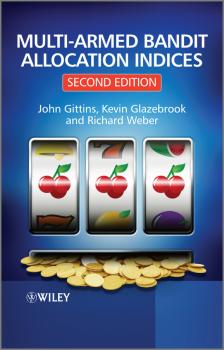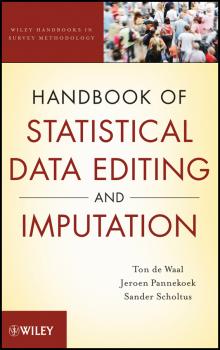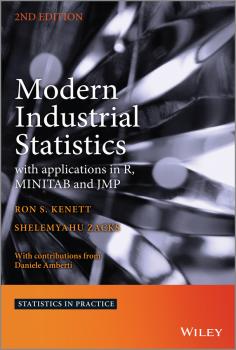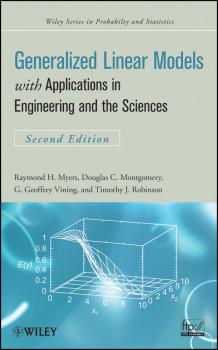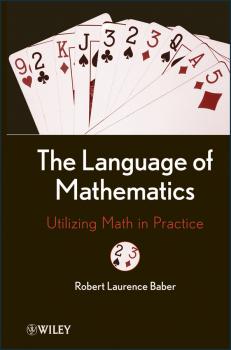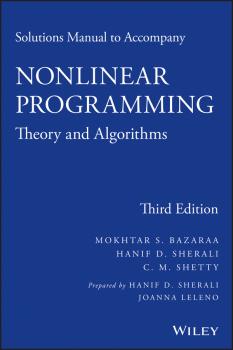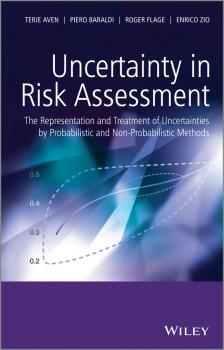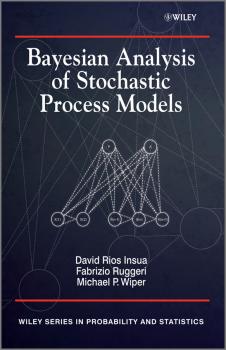ТОП просматриваемых книг сайта:
Математика
Различные книги в жанре Математика, доступные для чтения и скачиванияАннотация
In 1989 the first edition of this book set out Gittins' pioneering index solution to the multi-armed bandit problem and his subsequent investigation of a wide of sequential resource allocation and stochastic scheduling problems. Since then there has been a remarkable flowering of new insights, generalizations and applications, to which Glazebrook and Weber have made major contributions. This second edition brings the story up to date. There are new chapters on the achievable region approach to stochastic optimization problems, the construction of performance bounds for suboptimal policies, Whittle's restless bandits, and the use of Lagrangian relaxation in the construction and evaluation of index policies. Some of the many varied proofs of the index theorem are discussed along with the insights that they provide. Many contemporary applications are surveyed, and over 150 new references are included. Over the past 40 years the Gittins index has helped theoreticians and practitioners to address a huge variety of problems within chemometrics, economics, engineering, numerical analysis, operational research, probability, statistics and website design. This new edition will be an important resource for others wishing to use this approach.
Аннотация
A practical, one-stop reference on the theory and applications of statistical data editing and imputation techniques Collected survey data are vulnerable to error. In particular, the data collection stage is a potential source of errors and missing values. As a result, the important role of statistical data editing, and the amount of resources involved, has motivated considerable research efforts to enhance the efficiency and effectiveness of this process. Handbook of Statistical Data Editing and Imputation equips readers with the essential statistical procedures for detecting and correcting inconsistencies and filling in missing values with estimates. The authors supply an easily accessible treatment of the existing methodology in this field, featuring an overview of common errors encountered in practice and techniques for resolving these issues. The book begins with an overview of methods and strategies for statistical data editing and imputation. Subsequent chapters provide detailed treatment of the central theoretical methods and modern applications, with topics of coverage including: Localization of errors in continuous data, with an outline of selective editing strategies, automatic editing for systematic and random errors, and other relevant state-of-the-art methods Extensions of automatic editing to categorical data and integer data The basic framework for imputation, with a breakdown of key methods and models and a comparison of imputation with the weighting approach to correct for missing values More advanced imputation methods, including imputation under edit restraints Throughout the book, the treatment of each topic is presented in a uniform fashion. Following an introduction, each chapter presents the key theories and formulas underlying the topic and then illustrates common applications. The discussion concludes with a summary of the main concepts and a real-world example that incorporates realistic data along with professional insight into common challenges and best practices. Handbook of Statistical Data Editing and Imputation is an essential reference for survey researchers working in the fields of business, economics, government, and the social sciences who gather, analyze, and draw results from data. It is also a suitable supplement for courses on survey methods at the upper-undergraduate and graduate levels.
Аннотация
Fully revised and updated, this book combines a theoretical background with examples and references to R, MINITAB and JMP, enabling practitioners to find state-of-the-art material on both foundation and implementation tools to support their work. Topics addressed include computer-intensive data analysis, acceptance sampling, univariate and multivariate statistical process control, design of experiments, quality by design, and reliability using classical and Bayesian methods. The book can be used for workshops or courses on acceptance sampling, statistical process control, design of experiments, and reliability. Graduate and post-graduate students in the areas of statistical quality and engineering, as well as industrial statisticians, researchers and practitioners in these fields will all benefit from the comprehensive combination of theoretical and practical information provided in this single volume. Modern Industrial Statistics: With applications in R, MINITAB and JMP: Combines a practical approach with theoretical foundations and computational support. Provides examples in R using a dedicated package called MISTAT, and also refers to MINITAB and JMP. Includes exercises at the end of each chapter to aid learning and test knowledge. Provides over 40 data sets representing real-life case studies. Is complemented by a comprehensive website providing an introduction to R, and installations of JMP scripts and MINITAB macros, including effective tutorials with introductory material: www.wiley.com/go/modern_industrial_statistics.
Аннотация
Praise for the First Edition «The obvious enthusiasm of Myers, Montgomery, and Vining and their reliance on their many examples as a major focus of their pedagogy make Generalized Linear Models a joy to read. Every statistician working in any area of applied science should buy it and experience the excitement of these new approaches to familiar activities.» —Technometrics Generalized Linear Models: With Applications in Engineering and the Sciences, Second Edition continues to provide a clear introduction to the theoretical foundations and key applications of generalized linear models (GLMs). Maintaining the same nontechnical approach as its predecessor, this update has been thoroughly extended to include the latest developments, relevant computational approaches, and modern examples from the fields of engineering and physical sciences. This new edition maintains its accessible approach to the topic by reviewing the various types of problems that support the use of GLMs and providing an overview of the basic, related concepts such as multiple linear regression, nonlinear regression, least squares, and the maximum likelihood estimation procedure. Incorporating the latest developments, new features of this Second Edition include: A new chapter on random effects and designs for GLMs A thoroughly revised chapter on logistic and Poisson regression, now with additional results on goodness of fit testing, nominal and ordinal responses, and overdispersion A new emphasis on GLM design, with added sections on designs for regression models and optimal designs for nonlinear regression models Expanded discussion of weighted least squares, including examples that illustrate how to estimate the weights Illustrations of R code to perform GLM analysis The authors demonstrate the diverse applications of GLMs through numerous examples, from classical applications in the fields of biology and biopharmaceuticals to more modern examples related to engineering and quality assurance. The Second Edition has been designed to demonstrate the growing computational nature of GLMs, as SAS®, Minitab®, JMP®, and R software packages are used throughout the book to demonstrate fitting and analysis of generalized linear models, perform inference, and conduct diagnostic checking. Numerous figures and screen shots illustrating computer output are provided, and a related FTP site houses supplementary material, including computer commands and additional data sets. Generalized Linear Models, Second Edition is an excellent book for courses on regression analysis and regression modeling at the upper-undergraduate and graduate level. It also serves as a valuable reference for engineers, scientists, and statisticians who must understand and apply GLMs in their work.
Аннотация
A new and unique way of understanding the translation of concepts and natural language into mathematical expressions Transforming a body of text into corresponding mathematical expressions and models is traditionally viewed and taught as a mathematical problem; it is also a task that most find difficult. The Language of Mathematics: Utilizing Math in Practice reveals a new way to view this process—not as a mathematical problem, but as a translation, or language, problem. By presenting the language of mathematics explicitly and systematically, this book helps readers to learn mathematics¿and improve their ability to apply mathematics more efficiently and effectively to practical problems in their own work. Using parts of speech to identify variables and functions in a mathematical model is a new approach, as is the insight that examining aspects of grammar is highly useful when formulating a corresponding mathematical model. This book identifies the basic elements of the language of mathematics, such as values, variables, and functions, while presenting the grammatical rules for combining them into expressions and other structures. The author describes and defines different notational forms for expressions, and also identifies the relationships between parts of speech and other grammatical elements in English and components of expressions in the language of mathematics. Extensive examples are used throughout that cover a wide range of real-world problems and feature diagrams and tables to facilitate understanding. The Language of Mathematics is a thought-provoking book of interest for readers who would like to learn more about the linguistic nature and aspects of mathematical notation. The book also serves as a valuable supplement for engineers, technicians, managers, and consultants who would like to improve their ability to apply mathematics effectively, systematically, and efficiently to practical problems.
Аннотация
As the Solutions Manual, this book is meant to accompany the main title, Nonlinear Programming: Theory and Algorithms, Third Edition. This book presents recent developments of key topics in nonlinear programming (NLP) using a logical and self-contained format. The volume is divided into three sections: convex analysis, optimality conditions, and dual computational techniques. Precise statements of algortihms are given along with convergence analysis. Each chapter contains detailed numerical examples, graphical illustrations, and numerous exercises to aid readers in understanding the concepts and methods discussed.
Uncertainty in Risk Assessment. The Representation and Treatment of Uncertainties by Probabilistic and Non-Probabilistic Methods - Terje Aven
Аннотация
Explores methods for the representation and treatment of uncertainty in risk assessment In providing guidance for practical decision-making situations concerning high-consequence technologies (e.g., nuclear, oil and gas, transport, etc.), the theories and methods studied in Uncertainty in Risk Assessment have wide-ranging applications from engineering and medicine to environmental impacts and natural disasters, security, and financial risk management. The main focus, however, is on engineering applications. While requiring some fundamental background in risk assessment, as well as a basic knowledge of probability theory and statistics, Uncertainty in Risk Assessment can be read profitably by a broad audience of professionals in the field, including researchers and graduate students on courses within risk analysis, statistics, engineering, and the physical sciences. Uncertainty in Risk Assessment: Illustrates the need for seeing beyond probability to represent uncertainties in risk assessment contexts. Provides simple explanations (supported by straightforward numerical examples) of the meaning of different types of probabilities, including interval probabilities, and the fundamentals of possibility theory and evidence theory. Offers guidance on when to use probability and when to use an alternative representation of uncertainty. Presents and discusses methods for the representation and characterization of uncertainty in risk assessment. Uses examples to clearly illustrate ideas and concepts.
Introduction to Integral Calculus. Systematic Studies with Engineering Applications for Beginners - Ulrich Rohde L.
Аннотация
An accessible introduction to the fundamentals of calculus needed to solve current problems in engineering and the physical sciences I ntegration is an important function of calculus, and Introduction to Integral Calculus combines fundamental concepts with scientific problems to develop intuition and skills for solving mathematical problems related to engineering and the physical sciences. The authors provide a solid introduction to integral calculus and feature applications of integration, solutions of differential equations, and evaluation methods. With logical organization coupled with clear, simple explanations, the authors reinforce new concepts to progressively build skills and knowledge, and numerous real-world examples as well as intriguing applications help readers to better understand the connections between the theory of calculus and practical problem solving. The first six chapters address the prerequisites needed to understand the principles of integral calculus and explore such topics as anti-derivatives, methods of converting integrals into standard form, and the concept of area. Next, the authors review numerous methods and applications of integral calculus, including: Mastering and applying the first and second fundamental theorems of calculus to compute definite integrals Defining the natural logarithmic function using calculus Evaluating definite integrals Calculating plane areas bounded by curves Applying basic concepts of differential equations to solve ordinary differential equations With this book as their guide, readers quickly learn to solve a broad range of current problems throughout the physical sciences and engineering that can only be solved with calculus. Examples throughout provide practical guidance, and practice problems and exercises allow for further development and fine-tuning of various calculus skills. Introduction to Integral Calculus is an excellent book for upper-undergraduate calculus courses and is also an ideal reference for students and professionals who would like to gain a further understanding of the use of calculus to solve problems in a simplified manner.
Аннотация
Bayesian analysis of complex models based on stochastic processes has in recent years become a growing area. This book provides a unified treatment of Bayesian analysis of models based on stochastic processes, covering the main classes of stochastic processing including modeling, computational, inference, forecasting, decision making and important applied models. Key features: Explores Bayesian analysis of models based on stochastic processes, providing a unified treatment. Provides a thorough introduction for research students. Computational tools to deal with complex problems are illustrated along with real life case studies Looks at inference, prediction and decision making. Researchers, graduate and advanced undergraduate students interested in stochastic processes in fields such as statistics, operations research (OR), engineering, finance, economics, computer science and Bayesian analysis will benefit from reading this book. With numerous applications included, practitioners of OR, stochastic modelling and applied statistics will also find this book useful.
Аннотация
A comprehensive, one-stop guide to identifying, reducing, and managing nonresponse in household surveys Nonresponse and its impact on the sample selection mechanism of a survey is a common problem that often arises while collecting survey data. Handbook of Nonresponse in Household Surveys is a complete guide to handling the nonresponse problem, outlining statistical methods and techniques for improving response rates and correcting response data. The authors begin with an introduction to the nonresponse problem along with basic concepts and definitions. Subsequent chapters present current theories and methods that enable survey researchers to skillfully account for nonresponse in their research. Exploring the latest developments in the field, the book also features: An introduction to the R-indicator as an indicator of survey quality Discussion of the different causes of nonresponse Extensive treatment of the selection and use of auxiliary information Best practices for re-approaching nonrespondents An overview of advanced nonresponse correction techniques Coverage of adaptive survey design Throughout the book, the treatment of each topic is presented in a uniform fashion. Following an introduction, each chapter presents the key theories and formulas underlying the topic and then illustrates common applications. Discussion concludes with a summary of the main concepts as well as a glossary of key terms and a set of exercises that allows readers to test their comprehension of the presented material. Examples using real survey data are provided, and a related website features additional data sets, which can be easily analyzed using Stata® or SPSS® software. Handbook of Nonresponse in Household Surveys is an essential reference for survey researchers working in the fields of business, economics, government, and the social sciences who gather, analyze, and draw results from data. It is also a suitable supplement for courses on survey methods at the upper-undergraduate and graduate levels.

